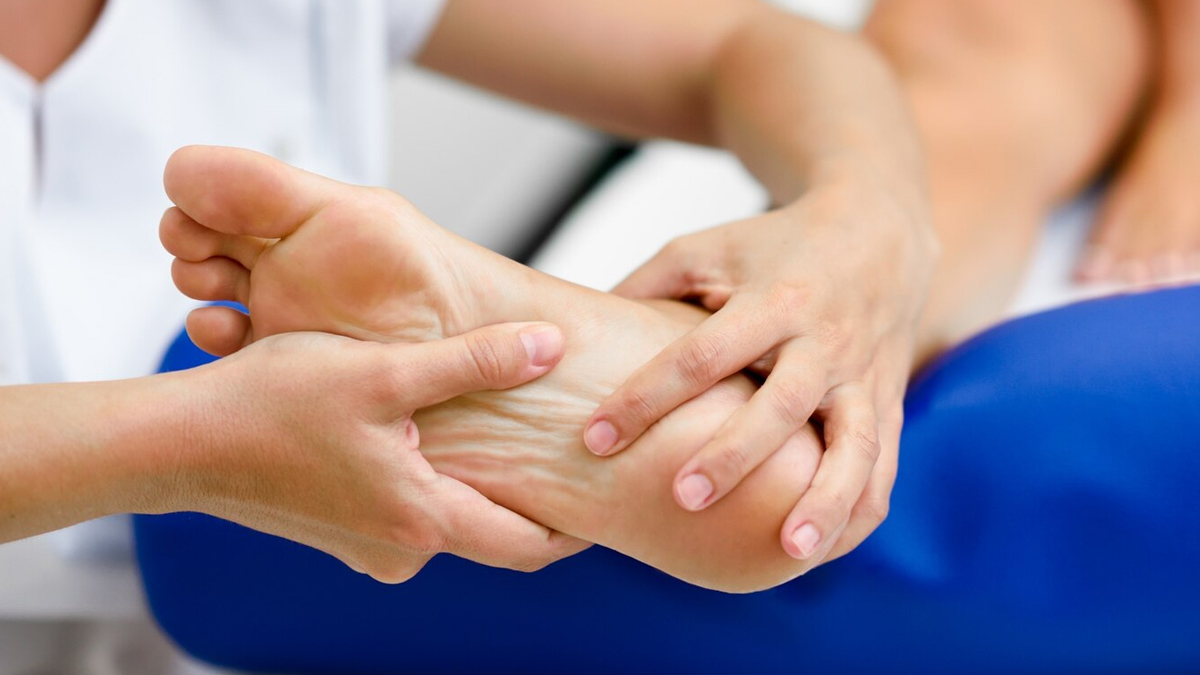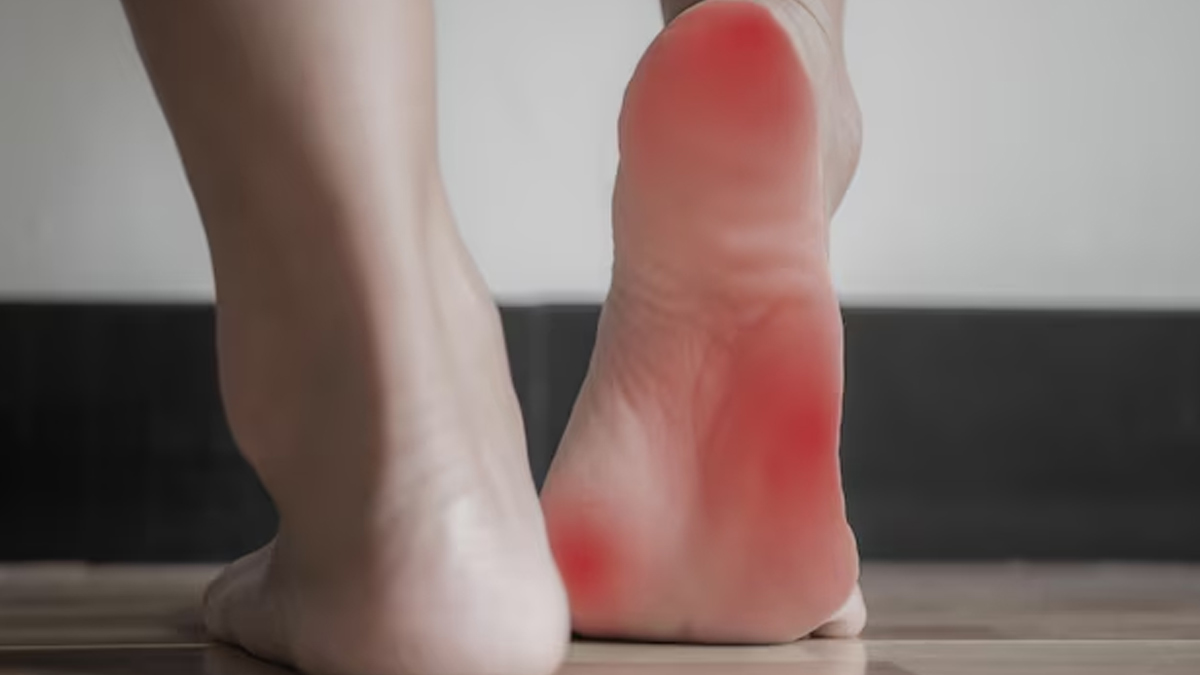
Have you ever woken up with sore heels, struggling to place your foot flat on the ground? If so, you might be suffering from plantar fasciitis, a common and completely treatable condition. While it may feel alarming, plantar fasciitis is simply the result of inflammation in the plantar fascia, a thick band of tissue that runs along the bottom of your foot.
Table of Content:-
But why does it occur? What causes it? And how can it be treated effectively? If you have all of these questions, you have landed on the right page, as Dr Gaurav Prakash Bhardwaj, Director - Sports Injury, Joint Preservation and Replacement Surgery, PSRI Hospital, Delhi, helps provide all the answers.
Also Read: Why Your High-End Sneakers Might Be Hurting Your Ankle, Orthopaedist Tells Why
What Is Plantar Fasciitis?

"Plantar fasciitis is a common condition that causes pain in the heel and bottom of the foot. It occurs when the plantar fascia, a thick band of tissue that connects the heel bone to the toes, becomes inflamed or irritated," explains Dr Bhardwaj, adding that this tissue supports the arch of your foot and acts like a shock absorber during walking or running.
When it becomes overstressed due to repetitive strain or pressure, tiny tears can develop, leading to inflammation and heel pain.
According to StatPearls Publishing, plantar fasciitis is the most common cause of heel pain, accounting for 10% of runner-related injuries and 11-15% of all foot symptoms requiring professional medical care.
Additionally, research suggests that plantar fasciitis occurs in about 10% of the general population, with 83% of these patients being active working adults between 25 and 65 years old.
Causes Of Plantar Fasciitis

Plantar fasciitis, or plantar heel pain, is primarily caused by overuse and repetitive strain on the plantar fascia.
Several factors can increase the risk. These include being overweight (which adds pressure to the feet), having a flat foot or high arch, and wearing unsupportive footwear.
"People who spend long hours standing or walking on hard surfaces, such as nurses, teachers, or factory workers, are also at higher risk," shares Dr Bhardwaj, adding that athletes, particularly runners who suddenly increase their training intensity without proper warm-up or stretching, are more prone to developing this condition.
Signs To Identify Plantar Fasciitis
According to Dr Bhardwaj, one of the earliest and most noticeable signs of plantar fasciitis is a sharp, stabbing pain in the heel, especially when taking your first steps in the morning.
"The pain may ease as you move around but often returns after long periods of standing, walking, or getting up from a seated position," he describes.
Some people also feel discomfort or tightness in the arch of the foot. Therefore, ignoring these early symptoms can lead to worsening pain and longer recovery time.
Treatment Options For Plantar Fasciitis

There are various ways plantar fasciitis can be treated and managed. "In the early stages, plantar fasciitis can often be managed at home. Resting the foot, applying ice to reduce inflammation, and performing gentle stretching exercises for the calf and foot arch can be very helpful," says Dr Bhardwaj.
He adds that Over-The-Counter (OTC) anti-inflammatory medications like ibuprofen can also reduce pain and swelling. "If the pain persists, a doctor may recommend physical therapy, night splints, custom orthotics, or in rare cases, corticosteroid injections."
Surgery is rarely needed but may be considered for chronic cases that do not improve with other treatments.
Also Read: What To Look For In A Footwear To Ease Aches And Pains
Your choice of footwear also plays a role in preventing, managing, and treating plantar fasciitis. Dr Bhardwaj highlights that shoes that lack proper arch support, cushioning, or shock absorption can place extra strain on the plantar fascia. High heels and flip-flops, for example, are common culprits.
Therefore, wearing well-fitted shoes with good heel support, arch cushioning, and a slightly raised heel can significantly reduce the stress on your feet. Using custom orthotics or insoles may also help in redistributing pressure and supporting proper foot alignment.
Conclusion
Plantar fasciitis may be a common cause of heel and arch pain, but with timely care and the right treatment approach, it’s entirely manageable and often curable. Paying attention to early warning signs, making simple lifestyle changes, choosing the right footwear, and seeking medical guidance when needed can make a great difference in recovery and long-term foot health. So, if you’ve been waking up with heel pain or struggling to stay on your feet comfortably, don’t ignore it.
Also watch this video
How we keep this article up to date:
We work with experts and keep a close eye on the latest in health and wellness. Whenever there is a new research or helpful information, we update our articles with accurate and useful advice.
Current Version
